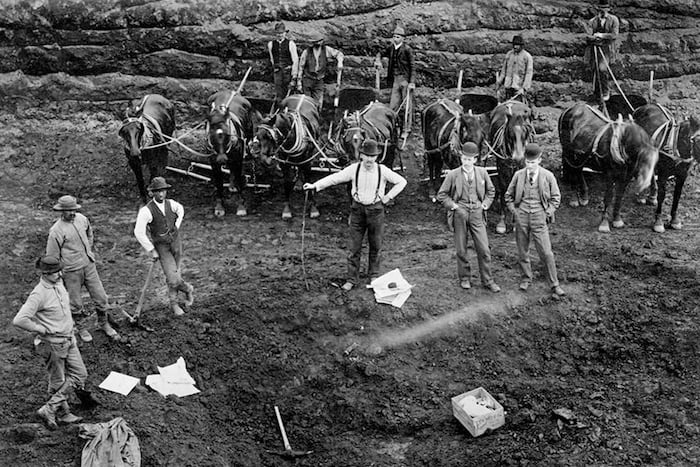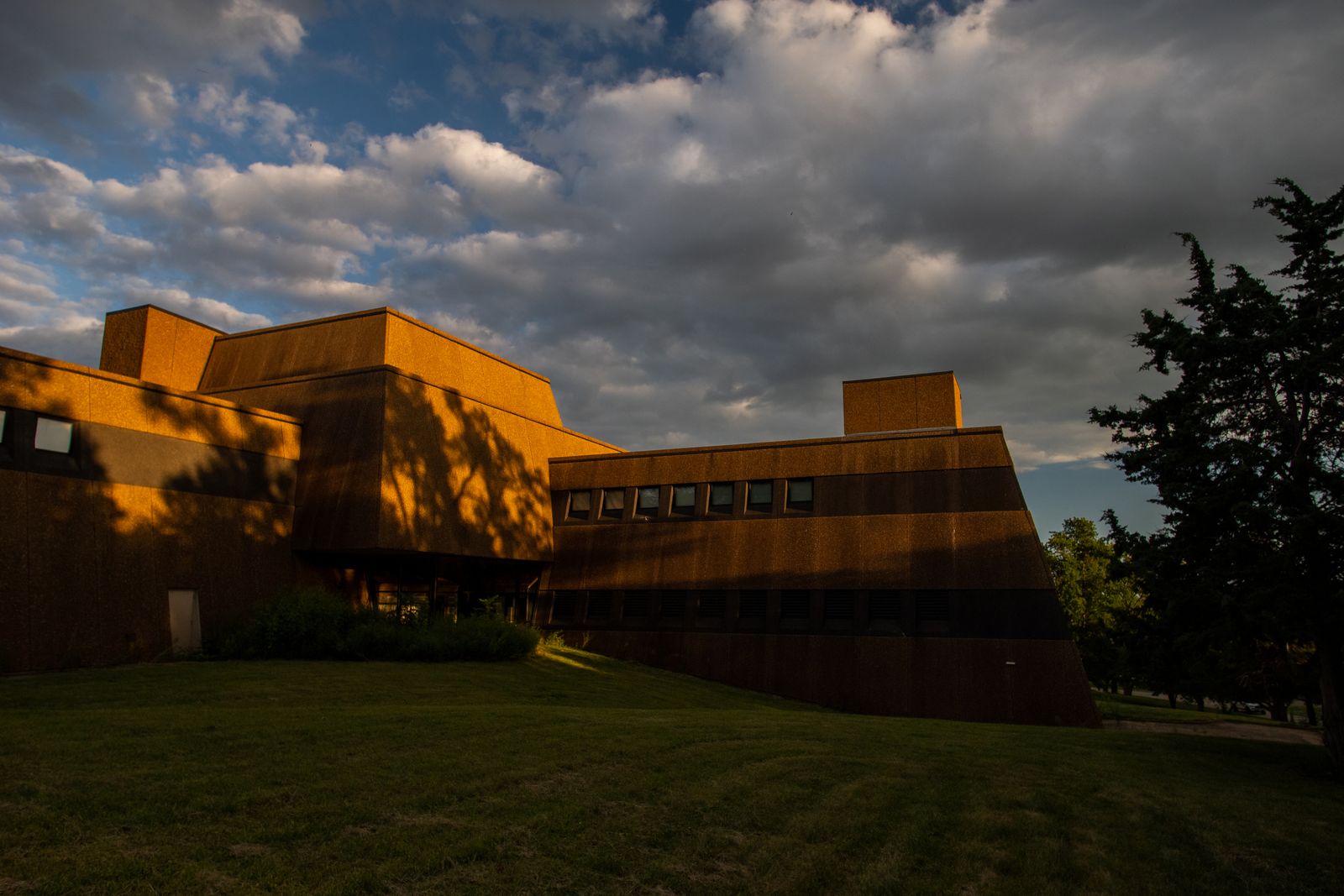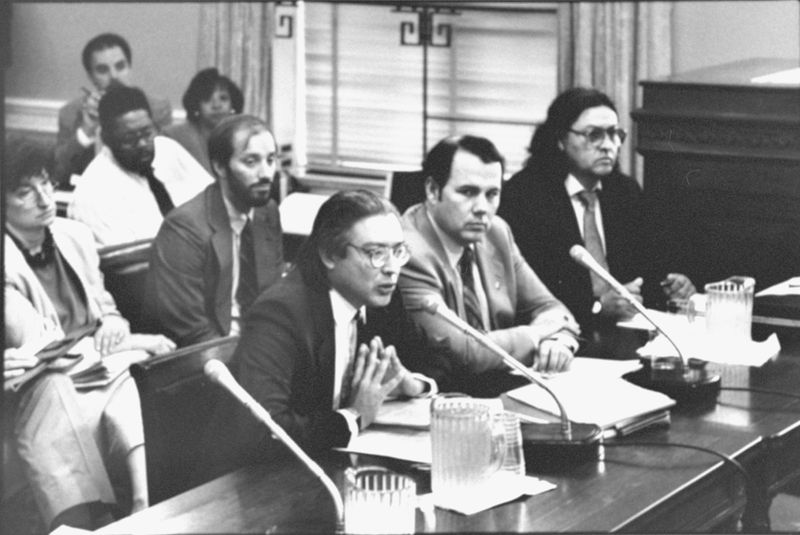Kentucky
Institutions reported making 27% of the more than 6,600 Native American remains taken from Kentucky available for return to tribes under NAGPRA.
There are 16 institutions located in Kentucky that reported Native American remains taken from across the country.
| Institution | Remains Not Made Available for Return | Remains Made Available for Return | % of Remains Made Available for Return |
|---|---|---|---|
| University of Kentucky, William S. Webb Museum of Anthropology | 3,787 | 978 | 21% |
| Western Kentucky University | 351 | 2 | 1% |
| University of Louisville | 259 | 16 | 6% |
| U.S. Department of the Interior | 123 | 4 | 3% |
| Northern Kentucky University | 52 | 0 | 0% |
| Speed Art Museum | 8 | 0 | 0% |
| U.S. Department of Agriculture | 8 | 12 | 60% |
| Filson Historical Society | 6 | 13 | 68% |
| Capital City Museum | 5 | 0 | 0% |
| Mercyhurst Univ. | 5 | 12 | 71% |
| Kentucky Historical Society | 0 | 2 | 100% |
| Murray State University, Archaeology Laboratory | 0 | 79 | 100% |
| Pioneer Museum, Blue Licks Battlefield State Resort Park | 0 | 3 | 100% |
| U.S. Department of Defense | 0 | 53 | 100% |
| U.S. Department of Justice | 0 | 5 | 100% |
| Wickliffe Mounds State Historic Site | 0 | 1 | 100% |
There are 46 institutions that reported Native American remains taken from Kentucky.
| Institution | Remains Not Made Available for Return | Remains Made Available for Return | % of Remains Made Available for Return |
|---|---|---|---|
| University of Kentucky, William S. Webb Museum of Anthropology | 3,693 | 978 | 21% |
| Western Kentucky University | 296 | 2 | 1% |
| University of Louisville | 256 | 16 | 6% |
| Harvard University | 249 | 49 | 16% |
| U.S. Department of the Interior | 125 | 3 | 2% |
| Northern Kentucky University | 47 | 0 | 0% |
| U.S. Department of Defense | 40 | 386 | 91% |
| Ohio History Connection (formerly the Ohio Historical Society) | 32 | 0 | 0% |
| Indiana University | 21 | 0 | 0% |
| U.S. Department of Agriculture | 8 | 12 | 60% |
| State Museum of Pennsylvania | 7 | 0 | 0% |
| Yale University, Peabody Museum of Natural History | 6 | 0 | 0% |
| American Museum of Natural History | 5 | 194 | 97% |
| Dayton Museum of Natural History | 3 | 0 | 0% |
| University of Florida, Florida Museum of Natural History | 3 | 0 | 0% |
| University of Memphis | 3 | 0 | 0% |
| Cranbrook Institute of Science | 2 | 0 | 0% |
| New York University, College of Dentistry | 2 | 0 | 0% |
| Robert S. Peabody Institute of Archaeology, Phillips Academy | 2 | 21 | 91% |
| University of Illinois, Urbana-Champaign | 2 | 0 | 0% |
| University of Michigan Museum of Anthropology | 2 | 2 | 50% |
| Cleveland Museum of Natural History | 1 | 0 | 0% |
| Nassau County Department of Parks and Recreation | 1 | 0 | 0% |
| St. Louis Science Center | 1 | 0 | 0% |
| University of Missouri, Columbia, Museum of Anthropology | 1 | 0 | 0% |
| Washington University | 1 | 0 | 0% |
| Western Reserve Historical Society | 1 | 0 | 0% |
| Ball State University, Applied Anthropology Laboratories | 0 | 3 | 100% |
| Beloit College, Logan Museum of Anthropology | 0 | 5 | 100% |
| Cincinnati Museum Center, Museum of Natural History and Science | 0 | 1 | 100% |
| Filson Historical Society | 0 | 11 | 100% |
| Illinois State Museum | 0 | 2 | 100% |
| Kentucky Historical Society | 0 | 1 | 100% |
| Mercyhurst Univ. | 0 | 3 | 100% |
| Milwaukee Public Museum | 0 | 4 | 100% |
| Murray State University, Archaeology Laboratory | 0 | 76 | 100% |
| Oregon State University | 0 | 11 | 100% |
| Pioneer Museum, Blue Licks Battlefield State Resort Park | 0 | 3 | 100% |
| San Bernardino County Museum | 0 | 3 | 100% |
| Santa Barbara Museum of Natural History | 0 | 1 | 100% |
| Tennessee Valley Authority | 0 | 8 | 100% |
| U.S. Department of Justice | 0 | 3 | 100% |
| University of Colorado Museum | 0 | 2 | 100% |
| University of Iowa, Office of the State Archaeologist | 0 | 3 | 100% |
| University of North Carolina at Chapel Hill | 0 | 1 | 100% |
| Wickliffe Mounds State Historic Site | 0 | 1 | 100% |
Institutions made Native American remains taken from Kentucky available for return to 23 tribes.
| Tribe | Remains Made Available for Return to Tribe |
|---|---|
| Shawnee Tribe | 1,268 |
| Absentee-Shawnee Tribe of Indians of Oklahoma | 1,255 |
| Eastern Shawnee Tribe of Oklahoma | 1,255 |
| Cherokee Nation | 706 |
| Eastern Band of Cherokee Indians | 706 |
| United Keetoowah Band of Cherokee Indians in Oklahoma | 706 |
| Chickasaw Nation | 206 |
| Quapaw Nation | 179 |
| Osage Nation | 83 |
| Muscogee (Creek) Nation | 80 |
| Choctaw Nation of Oklahoma | 15 |
| Alabama-Coushatta Tribe of Texas | 8 |
| Coushatta Tribe of Louisiana | 8 |
| Jena Band of Choctaw Indians | 8 |
| Kialegee Tribal Town | 8 |
| Poarch Band of Creek Indians | 8 |
| The Seminole Nation of Oklahoma | 8 |
| Thlopthlocco Tribal Town | 8 |
| Miami Tribe of Oklahoma | 6 |
| Peoria Tribe of Indians of Oklahoma | 6 |
| Delaware Nation, Oklahoma | 3 |
| Delaware Tribe of Indians | 3 |
| Assiniboine and Sioux Tribes of the Fort Peck Indian Reservation, Montana | 1 |
Institutions reported Native American remains taken from 98 counties in Kentucky.
| County | Remains Taken From County Not Made Available for Return | Remains Made Available for Return | % of Remains Made Available for Return |
|---|---|---|---|
| McLean County | 1,080 | 2 | 0% |
| Ohio County | 1,024 | 12 | 1% |
| Butler County | 642 | 0 | 0% |
| Jefferson County | 224 | 97 | 30% |
| Hopkins County | 169 | 7 | 4% |
| Boone County | 156 | 113 | 42% |
| Edmonson County | 156 | 1 | 1% |
| Union County | 140 | 11 | 7% |
| Hart County | 117 | 0 | 0% |
| Warren County | 105 | 0 | 0% |
| Henderson County | 73 | 3 | 4% |
| Barren County | 67 | 0 | 0% |
| Allen County | 66 | 0 | 0% |
| Logan County | 58 | 30 | 34% |
| Montgomery County | 51 | 22 | 30% |
| Christian County | 44 | 79 | 64% |
| Russell County | 43 | 0 | 0% |
| Crittenden County | 32 | 3 | 9% |
| Henry County | 31 | 0 | 0% |
| Mason County | 31 | 229 | 88% |
| Johnson County | 30 | 6 | 17% |
| Meade County | 30 | 0 | 0% |
| Campbell County | 28 | 0 | 0% |
| Monroe County | 21 | 0 | 0% |
| Fayette County | 19 | 5 | 21% |
| Knott County | 19 | 0 | 0% |
| Garrard County | 17 | 0 | 0% |
| Bullitt County | 16 | 0 | 0% |
| Spencer County | 16 | 0 | 0% |
| Menifee County | 15 | 0 | 0% |
| Pike County | 15 | 80 | 84% |
| Wayne County | 14 | 0 | 0% |
| Wolfe County | 14 | 0 | 0% |
| Woodford County | 14 | 0 | 0% |
| Green County | 13 | 0 | 0% |
| Greenup County | 11 | 528 | 98% |
| Hancock County | 11 | 0 | 0% |
| McCreary County | 10 | 8 | 44% |
| Bourbon County | 9 | 138 | 94% |
| Breckinridge County | 9 | 0 | 0% |
| Metcalfe County | 9 | 0 | 0% |
| Muhlenberg County | 9 | 2 | 18% |
| Breathitt County | 8 | 3 | 27% |
| Bath County | 7 | 0 | 0% |
| Clay County | 7 | 0 | 0% |
| Estill County | 7 | 1 | 13% |
| Adair County | 6 | 0 | 0% |
| Bell County | 6 | 10 | 63% |
| Harlan County | 6 | 0 | 0% |
| Shelby County | 6 | 0 | 0% |
| Cumberland County | 4 | 0 | 0% |
| Knox County | 4 | 0 | 0% |
| Whitley County | 4 | 0 | 0% |
| Bracken County | 3 | 37 | 93% |
| Jessamine County | 3 | 12 | 80% |
| Lee County | 3 | 0 | 0% |
| Perry County | 3 | 12 | 80% |
| Powell County | 3 | 1 | 25% |
| Todd County | 3 | 0 | 0% |
| Carroll County | 2 | 3 | 60% |
| Carter County | 2 | 0 | 0% |
| Floyd County | 2 | 2 | 50% |
| Grayson County | 2 | 0 | 0% |
| Harrison County | 2 | 6 | 75% |
| Kenton County | 2 | 0 | 0% |
| Lawrence County | 2 | 0 | 0% |
| Leslie County | 2 | 0 | 0% |
| Lewis County | 2 | 1 | 33% |
| Nicholas County | 2 | 13 | 87% |
| Owen County | 2 | 0 | 0% |
| Pulaski County | 2 | 0 | 0% |
| Scott County | 2 | 12 | 86% |
| Simpson County | 2 | 0 | 0% |
| Boyd County | 1 | 0 | 0% |
| Caldwell County | 1 | 1 | 50% |
| Clark County | 1 | 0 | 0% |
| Fulton County | 1 | 14 | 93% |
| Hardin County | 1 | 0 | 0% |
| Jackson County | 1 | 0 | 0% |
| Letcher County | 1 | 0 | 0% |
| Lincoln County | 1 | 0 | 0% |
| McCracken County | 1 | 17 | 94% |
| Taylor County | 1 | 0 | 0% |
| Webster County | 1 | 0 | 0% |
| Ballard County | 0 | 17 | 100% |
| Calloway County | 0 | 6 | 100% |
| Carlisle County | 0 | 12 | 100% |
| Casey County | 0 | 3 | 100% |
| Franklin County | 0 | 10 | 100% |
| Laurel County | 0 | 1 | 100% |
| Livingston County | 0 | 3 | 100% |
| Lyon County | 0 | 145 | 100% |
| Madison County | 0 | 1 | 100% |
| Marshall County | 0 | 6 | 100% |
| Mercer County | 0 | 9 | 100% |
| Morgan County | 0 | 1 | 100% |
| Robertson County | 0 | 3 | 100% |
| Trigg County | 0 | 52 | 100% |
Know how an institution is handling repatriation? Have a personal story to share? We'd like to hear from you.
Watch an informational webinar with our reporters.
This tool presents a dataset maintained by the National Park Service containing all the Native American human remains and associated funerary objects that institutions have reported to the federal government under the Native American Graves Protection and Repatriation Act. The dataset includes information about the state and county where remains and objects were taken from, which institutions hold them and whether they have been made available for return to tribes.
The data is self-reported by institutions. The amount of unrepatriated Native American remains reported by institutions is a minimum estimate of individuals and institutions frequently adjust these numbers when they reinventory groups of remains. Some institutions that are subject to NAGPRA have also entirely failed to report the remains in their possession. As a result, the numbers provided are best taken as estimates. The actual number and geographic scope of what’s held by publicly funded institutions is larger than what is presently documented.
ProPublica supplemented this dataset with information about cultural affiliation and disposition to specific tribes by systematically parsing the text of Notices of Inventory Completion published in the Federal Register. An additional dataset from the Department of Housing and Urban Development, the Tribal Directory Assessment Tool, was used for the section on remains not made available for return from counties that each tribe has indicated interest in to the federal government.
Institution location and tribal headquarters location information was provided by National NAGPRA. The location of some groups that are not federally recognized was provided through research by ProPublica.
Institutions that are part of a larger entity are grouped. (For example, the Mesa Verde National Park is part of the U.S. Department of the Interior.)
Institutions that have not submitted information to the federal government are not listed. The Smithsonian Institution is not listed because its repatriation process falls under the National Museum of the American Indian Act and it is not required to publicly report its holdings with the same detail as institutions subject to NAGPRA.
If you work for an institution and would like to provide comment on your institution’s repatriation efforts, please email [email protected]. If you think the data is incorrect or have a data request, please get in touch. We are aware of some issues with the accuracy of location information and tribes mistakenly being identified for disposition of Native American remains in published notices.
If you want to share something else with ProPublica, we’d like to hear from you.
If you have questions about implementing or complying with the Native American Graves Protection and Repatriation Act, get in touch with National NAGPRA or the NAGPRA Community of Practice.
We use the word “tribes” to refer to all groups that institutions made Native American remains available to under NAGPRA. This includes tribes, nations, bands, pueblos, communities, Native Alaskan villages, Native Hawaiian organizations and non-federally recognized groups.
Data sources from Department of the Interior, National Park Service, National NAGPRA Program, the Federal Register, Department of Housing and Development, Tribal Directory Assessment Tool


